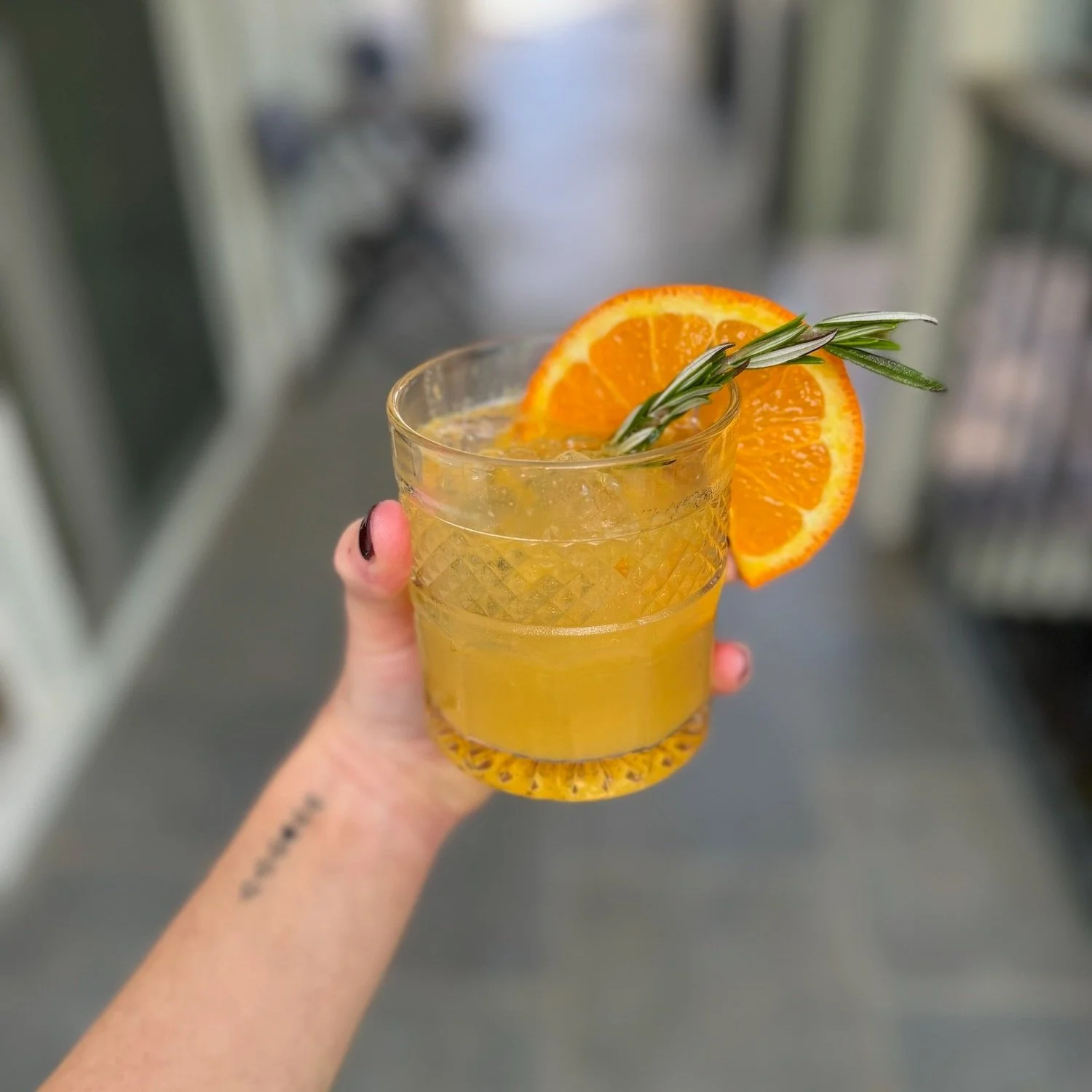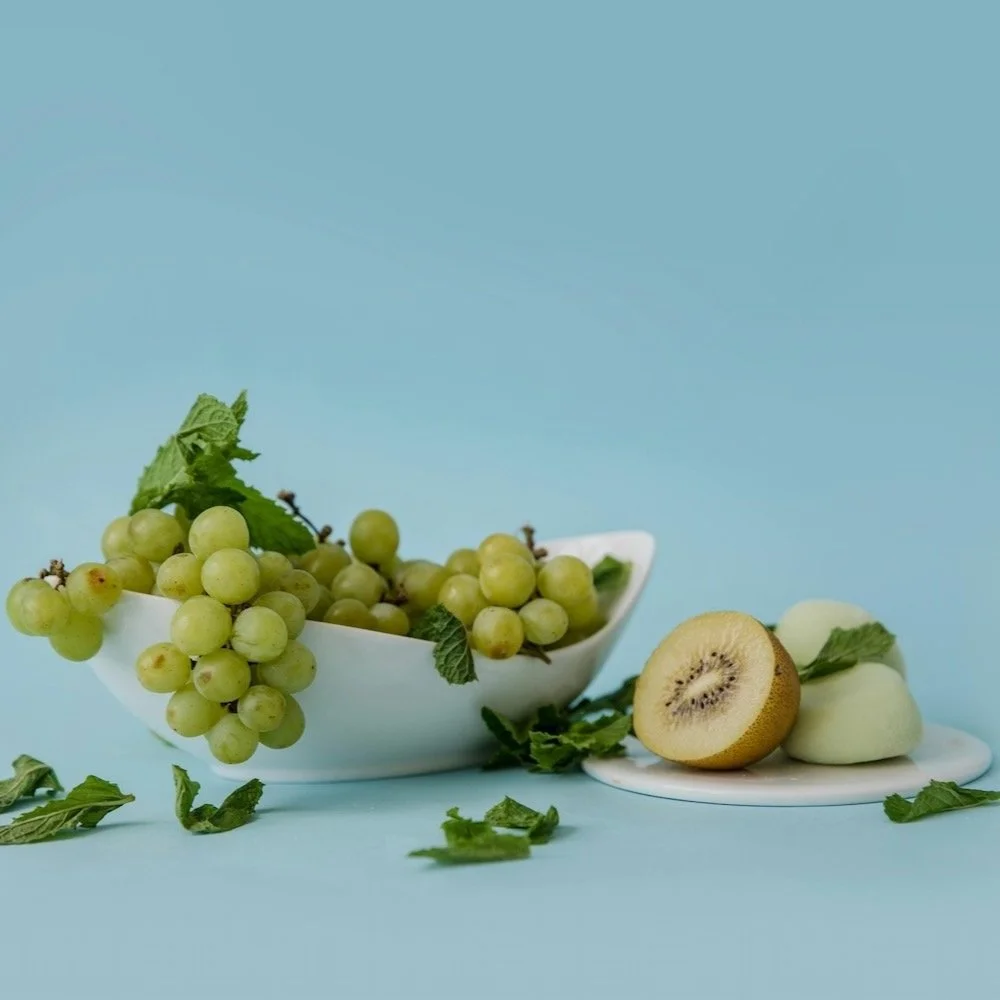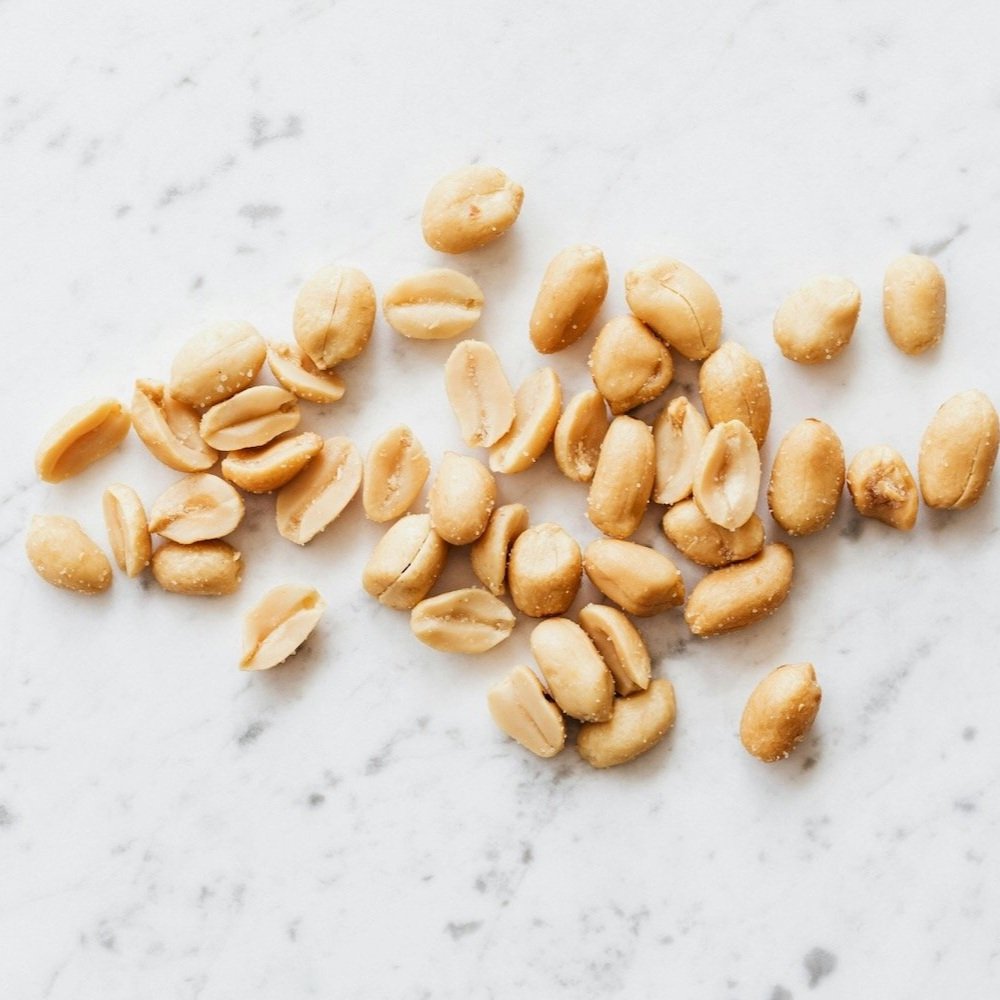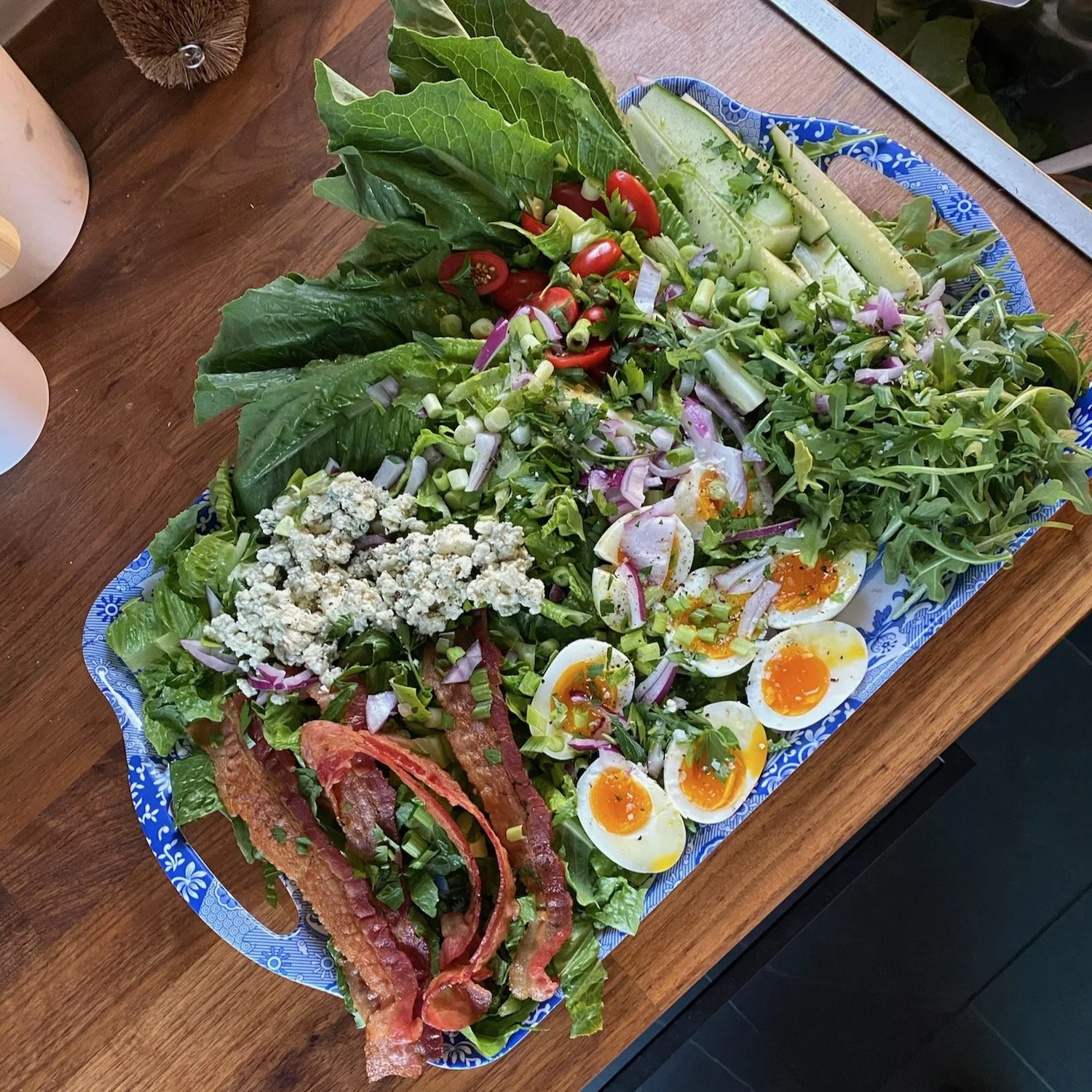4 Chill Ways To Eat Healthier Without Making It Your Whole Life
These tiny health habits are the very definition of low hanging fruit.
by The Candidly Team
If you are a hardcore hound when it comes to health, who revels in routines and counts their macros, this article is probably not for you. You’re crushing it, and we applaud you.
But if you’re out here just doing the best you can to shuffle some more nutrients into your body or to get through one day without tossing a bag of chips on the counter when you pay for your salad, keep reading. This article is for you (us!)
The reason so many of us need dumb tricks and shortcut hacks to be healthy is not because we’re lazy, unmotivated slobs. It’s because we’re busy and tired and because tracking the latest fitness advice, much less actually following it, can feel like a full-time, brain-breaking job.
And sometimes, we just need things to be simpler. We need concrete, grabbable ideas for how to be healthier without it consuming our whole existence. Well, here are four such things that we’ve found tremendously helpful. They’re short. They’re simple. Some of you will sound off in the comments on just how short and simple.
But man, do they make a difference. And here’s what they are.
1. Blend and prep ready-to-grab veggies.
One of the main reasons we skimp on nourishing ourselves with healthful foods is because we’re not Ancient Romans, languishing about and being fed grapes all day. In other words, we have other stuff going on. The majority of us wait until we’re cartoonishly hungry to actually feed ourselves, and when we do, we grab whatever feels good (aka salt/ fat/ sugar) and is accessible (*cough* comes in a package). The idea that we’re going to get up from our desks feeling snacky and deal with an unwashed stack of seed-filled peppers and slippery carrots is laughable.
While it’s true that preparation isn’t something we’re always going to have the time or energy to do any moment we require sustenance, there are pockets of opportunity to prepare that we should pounce on by doing these 2 things that greatly benefit our future selves.
1. Pre-chop or portion out: It’s so simple but when you feel that boost of energy, like say the minute you get home from the market and have to put all your crap away anyway or first thing in the morning when you know you’ll be exhausted by 5:42PM when you inevitably have to “do something” for dinner, just take out an enormous cutting board (the enormousness helps), and chop away.
Use cute, reusable zips to pack your snacks. THESE ones are life-saving and not at all annoying to wash.
You can also freeze fresh fruit with a handful of kale or spinach for smoothie prep, or portion out some veggies for a dish to be baked later. THESE non-toxic Tupperwares are an investment, but they’re both freezable and bakeable which is the stuff of dreams!
Obviously, you want to enjoy anything you put effort into while it’s still fresh, so we like THIS little guide on veggie storage. And if you’re deranged, like us, you’ll enjoy the deep soulful satisfaction of just watching something like this.
2. Puree like there’s no tomorrow: We all know about smoothies. But blending is even more glorious when done to all our nicely cooked veggies that we had enough steam to throw in a pot full of herbs and spices at the start of the week then place in our fridge or freezer for lazy, everyday consumption.
It sounds dumb, but blending is truly one of the easiest, most realistic way to infuse a massive dose of veg per bite. We do this routinely in the form of soups but also in sauces that we then use to ladle onto pastas, proteins, and casseroles.
And because we’re even lazier than the average human and big countertop devices can be a pain in the ass to wash, we use THIS powerful handheld immersion blender as our biggest hack for doing this all extremley quickly with 18 seconds of clean-up.
A few examples of what to make include:
A creamy green soup: Sautée a few carrots and onions. Throw in every green veggie on God’s green earth that you can stand (we like broccoli, asparagus, spinach, and peas). Some can be fresh. Some can be frozen. All can be chopped with sloppy, unskillful abandon. Add butternut squash or sweet potato. Fresh basil is optional. Spices like ginger, curry, and cardamom can be thrown in wildly, and somehow it will always come out like you measured with chefy precision. Add veggie broth along with coconut milk and a spoonful of creamy cashew butter, that is if you want the sort of richness that makes food taste like it’s been loved. Blend it up and boom, nothing about it tastes like it has any business being good for you.
A hidden veg tomato sauce: Same deal. Onions, carrots, rinsed canned whole tomatoes. If peppers are your thing, throw them in. If not, go for something innocuous like spinach or celery. Broccoli will work too, but it will add a little texture. If you want to add a protein like ground grass-fed beef or turkey, please do. If you want to make it divinely creamy, add (blended) Good Culture cottage cheese. It’s life-changing.
Now obviously, we know not all things stay fresh all week and need to be stored properly for the correct amount of time and to preserve nutrients. It’s perfectly great to just grab a big fat apple on our way out the door, but some of these tricks can be enormously helpful for those of us who know ourselves well enough to admit that speed and convenience are critical to us eating healthy in an ongoing way.
2. Treat fruit and veg like garnish for every meal and snack
Sound obvious? Well, that’s precisely the point. Anything that’s not easy is not likely to edge its way into our lives and become any sort of habit.
So rather than demonize foods we’re going to eat anyway like dairy and carbs (which by the way are also known as protein, calcium, and fiber), just make sure to add more good things to them.
A few ideas include:
Plop a handful of berries, some frozen banana slices, or pomegranate seeds into every cottage cheese or yogurt you grab from the fridge.
Sprinkle finely chopped leafy things like watercress, red cabbage, and broccoli sprouts (all are superheroes in terms of health) on everything from tuna salads to sandwiches to tacos.
Throw 3 extra things that grow in the ground into your morning eggs.
Pour a big round scoop of extra sauce onto your pasta.
Use those prepped veggies to layer onto bougie avocado toast. Ever tried it with some thin slices of roasted mushrooms and a drizzle of the good olive oil? Heaven. Or onto (again) cottage cheese? Double heaven.
3. Think of adding instead of subtracting.
We’re constantly being told that somewhere around 95% of diets fail. Restriction, in general, is just a weird word to constantly apply to something we all have to do every day to survive. Also, it makes us feel like there’s moral weight to our response to something as basic as our body’s natural hunger signals.
At the same time, there’s a reality to the fact that we feel like garbage after eating a bunch of processed chemicals that’s aren’t actually designed to do anything beneficial for our health. An obvious solution can be to shift our focus on what we need more of, which is basically whole foods.
This, of course, goes hand in hand with everything we’ve mentioned above about making all these things more readily accessible to ourselves, but it’s also about thinking “what’s missing from my plate?” as opposed to all the bitchy, judgy coaching in our heads, screaming “WTF, you shouldn’t be eating this!”
Obviously, there are slews of vitamins and minerals we need, especially as women over 40. We personally like to spotlight some of the specific and near-magic foods we should be eating daily. But here’s a little highlight reel of some of the items we can add to our plate to get the following needed nutrients. And if it seems overwhelming, rest-assured, there are a whole lotta repeats on this list that can easily translate into a spectacular shopping list:
Protein: Eggs, oatmeal, cottage cheese, beans, legumes, nuts, chicken, fish. Here are some additional low-key sources we sleuthed if you’re very serious about protein.
Why You Need It: Helps with one health, increases muscle mass, and helps you feel fuller for longer.
Fiber: Pinto Beans, lentils, chickpeas, chia seeds, flax seeds, nuts, avocadoes, raspberries, blackberries, pears, artichokes, peas, broccoli
Why You Need It: Helps you absorb more nutrients, detox your body, boost metabolism, and maintain blood sugar.
Calcium: Dairy (milk, cheese, and yogurt - grass-fed is best), seeds, nuts, leafy greens, fish, figs, dried apricots, currants, oranges, kiwi
Why You Need It: builds and maintains bone strength, contributes to heart, muscle and nerve function.
Potassium: Bananas, sweet potatoes, spinach, watermelon, beans, squash potatoes, dried apricots, Swiss chard, beets, pomegranates We also wrote a big loooong list here.
Why You Need It: could help with lowering blood pressure, preventing strokes, lowering osteoporosis risk, and reducing water retention
Magnesium: Almonds, cashews, spinach, black beans, avocados, potato, spinach, whole wheat bread. Once again, we dove deep here.
Why You Need It: Could help build and maintain bone health, improve brain function and mood, form and repair DNA, boost energy, reduce inflammation, improve sleep, relieve constipation.
Vitamin B12: Fish, shellfish, liver eggs, poultry, milk, cheese, yogurt, fortified cereals
Why You Need It: helps with blood health, creating and regulating DNA, and brain and nervous system function
Omega 3s: Flax and chia seeds, salmon, anchovies, seaweed, oysters, walnuts
Why You Need It: could support your heart health and help to lower your triglycerides, a type of fat found in blood
Vitamin D: Cod liver oil, salmon, swordfish, tuna fish, sardines, liver, egg yolks, juices, milks, and cereals fortified with vitamin D
Why You Need It: Might help with immune function adn to fight off disease
Probiotics: Yogurt, kefir, kombucha, sauerkraut, pickles, miso, tempeh, kimchi, sourdough
Why You Need It: balances bacteria in your digestive system, supporting gut health and possibly helping with boost heart health and lose weight
4. Follow the 80% rule.
We learned this idea from research done on Blue Zones, specific regions of the world where people are most commonly living past 100. This particular concept comes from Okinawa, Japan and happens to be thousands of years old, so no it’s not a new fad we saw on TikTok or something.
And here’s what it is: stop eating when you’re 80% full.
Of everything we’ve suggested, we admit this one sounds a little more diet-y. But it’s really more about helping ourselves to pay a little more attention to what we feel when we eat. If we do it more slowly, if we enjoy it more, and if we resist that last little dose that maybe makes us feel sluggish and less alert, why not try to see how we feel after 80%?
Chances are, we will feel a whole lot better. And we might just live longer to boot.
This article is for informational purposes only. It is not intended to be used in place of professional advice, medical treatment, or professional care in any way. This article is not intended to be and should not be a substitute for professional care, advice or treatment. Please consult with your physician or healthcare provider before changing any health regimen. This article is not intended to diagnose, treat, or prevent disease of any kind. Read our Terms & Conditions and Privacy Policy.
At The Candidly, we try a lot of stuff so you don’t have to. We only recommend things we truly love, and that we think you’ll love, too. All products are chosen independently by our creative team, and all details reflect the price and availability of products at the time of publication. If you buy something we link to, The Candidly may earn a commission.
We have to eat.


















